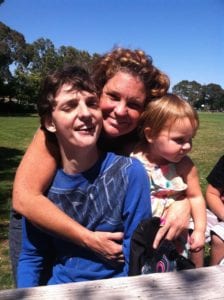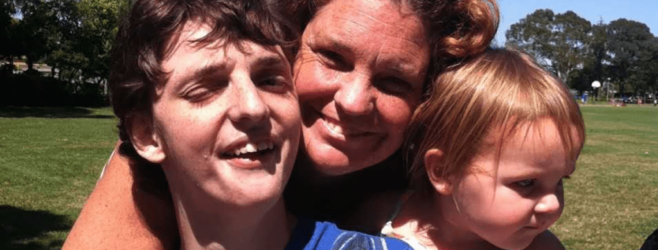
While children with cerebral palsy may face physical and emotional challenges, their differences do not make them less human than any of us. No one exemplifies this lesson better than Bodi Ealey.
A Mother’s Love
Bodi — who was born with cerebral palsy and later died in a care facility — was dutifully cared for by his mother, Sarah, throughout his life.
Though Sarah knew her son would face challenges, she did everything she could to give him the best life possible.
Doctors initially said that Bodi’s quality of life would be limited. However, thanks to Sarah, he learned to walk, eat and speak. He also became involved with physical activities and made friends.
Bodi’s only complaint was that many people failed to see him for who he was because of his condition. Still, in the end, he didn’t allow his disability to define him. With the help of his mother, Bodi was able to live a rewarding life.
A Difficult Birth
Sarah was just 21 when Bodi was born. However, he suffered serious injuries at birth and almost died during delivery.
Bodi’s head got stuck during labor, and doctors failed to remove him through the use of forceps or suction instruments. His head lost circulation, and by the time he was finally born, he had no heartbeat.
Bodi was resuscitated but suffered from severe seizures. He was diagnosed with athetoid cerebral palsy, which limits the control of muscular movements.
After his birth, Bodi and Sarah spent a month in the hospital recovering.
Never Say ‘No’
Early on, doctors gave Bodi a poor prognosis based on his condition. The damage to his brain was severe, and doctors believed he would have a very limited quality of life.
Despite this, Sarah took a “never say no” approach to raising her son. She didn’t want Bodi to be limited because of his condition and worked tirelessly to give him the best life possible.
Since he wasn’t able to sit up on his own, she placed Bodi in a small tire. This allowed him to sit up normally and helped build up his core muscles. He could sit up without assistance by the time he was a 2-year-old.
Sarah applied this “never say no” philosophy throughout Bodi’s lifetime, making his care her mission. In the process, Bodi beat the odds.
Over time, Bodi learned how to:
- Communicate through sign language
- Eat
- Talk
- Walk
When Bodi and Sarah met up with their care team a few years after he was born, they were astounded by his progress.
“They asked, ‘What did you do?’” Sarah recalled. “And I said: ‘I loved him. I just loved him.’”
Growing Up
As Bodi got older, his mother helped him not only improve his motor skills but explore the outside world. Bodi shared Sarah’s love of adventure, and she also instilled a love of music and physical activities in her son.
With help, Bodi was able to:
- Attend music festivals
- Go camping
- Ski
- Do yoga
- Ride on amusement park rides
“Bodi had a wonderful life despite his challenges,” Sarah said.
One of the Guys
Over time, Bodi developed a love of music — especially hip-hop and country — and video games like Grand Theft Auto. He formed a few close friendships and was especially close with his cousin Jesse, who would take him out to the skate park.
However, Bodi found that his condition put him at a distance from many of his peers.
Though Bodi attended classes and programs for those who had cerebral palsy and other conditions, he didn’t connect with many of his classmates.
His cerebral palsy did not limit his mental abilities, only his physical ones. Because of this, he identified more with those without cerebral palsy.
“He was discounted as a human being,” Sarah said. To her, it seemed that the general public was more interested in how to get him out of society rather than how to love him.
A Deep Divide
The gap between Bodi and his peers worsened as he aged. While he loved his mother enormously, he was very frustrated that people his age were not connecting with him emotionally.
He also wanted to be more independent and pursue relationships, but his condition made this difficult.
“As he got older, it just became more and more unsettling for him,” Sarah said.
Bodi was staying at a care facility to work on his emotional struggles when he died. He was 22 years old.
Children with Cerebral Palsy Should Not Be Treated Differently
At the end of the day, everyone should be treated with compassion and equality. Those with cerebral palsy and other birth injuries are no different.
Families should consult with their doctors, teachers and counselors to find ways to help their children feel included. Though it can be challenging or confusing to raise a child with cerebral palsy, they can go on to live healthy and happy lives.
To other families who have children with cerebral palsy, Sarah says:
Appreciate, appreciate, appreciate. The more you appreciate, the more you have to appreciate. Because those moments will be gone.



